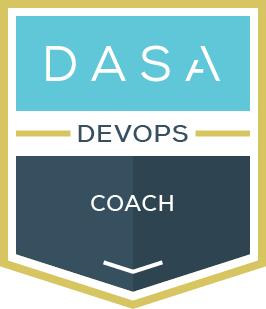As follow up to the successful ‘Fit for the Future’ CIO event organized by CIO Platform Netherlands and DevOps Agile Skills Association (DASA), a CEG Agile/Scrum event was organized and kindly hosted by Rabobank. One of the goals was to further explore the findings from the CIO event.
As part of this follow on event I explored with delegates the key findings from 400 global teams having participated in the Phoenix Project DevOps simulation highlighting the top 3 recommendations. These recommendations were matched to the findings from the ‘Fit for the Future’ results relating to ‘Value Creation & Management’, ‘Organizational Design’ and ‘Lasting Culture Change’.
One discovery throughout this follow-up day was that ‘Managers are critical ‘assets’ for the transformation, but at the same time a liability, as traditional management styles and approaches can clash with the Agile philosophy’. This was also a clear discovery at the ‘Fit-for-the-Future’ event.
Improvement Exercise
One of the top global findings from 400 teams and an important discovery from the CIO event was the importance of ‘Embedding continual learning and improvement’. We conducted a small workshop exercise in which we ‘experimented’ with a new work form. After all, the third way of DevOps is all about experimentation and learning.
Delegates were each asked to stick a post-it with their top organizational ‘impediment’ onto an improvement backlog. These impediments were clustered around the 3 topic areas from the ‘Fit-for-the-Future’ event. ‘Value Creation & Management’, ‘Organizational Design’ and ‘Lasting Culture Change.
“…This enabled us to visualize the backlog of improvement needs”.
Delegates were then asked to prioritize, which ‘impediment’ is the biggest barrier to transformation success?
The team prioritized ‘Supporting Leadership’. Which clearly aligned with findings from the ‘Fit-for-the-Future’ breakout session results and also in line with the current DASA Leadership courseware that is being developed.
We then mapped a sort of ‘behavior flow’ on our visible management board. ‘In order to solve this impediment, which change in behaviors will now need to flow from the CIO all the way through the end to end organization and stakeholders? And which artifacts or rituals would support this’?
“…This allowed us to start seeing the flow and dependencies of behaviors, and identifying and adding new stakeholders”.
“The CIO must explain the goals and purpose,” said one as a starting point coupled to what they call their ‘Leadership manifesto’.
“How does the CIO ensure that the messaging remains consistent all the way through the flow?” I asked.
“Not just in terms of the ‘messaging’ but also in consistently ‘walking-the-talk’’?
Example: One CIO declared the goals and intentions of the transformation. She placed an emphasis on ‘Customer value’, as well as ‘Collaboration’ and ‘Fact-based decision making’. The next manager in the stream explained it to his team, placing the emphasis on ‘Collaboration’, the team leads passed the message down as ‘Fact-based’, the team individuals interpreted this as ‘we are being measured’. This is an example of passing a ‘defect downstream’. Not only must work flow smoothly downstream, so too must information and behavior, and there must be open, transparent, safe, blame-free feedback on behaviors going back upstream to correct these defects.
‘Does the flow always start with the CIO’? I explained that nobody else from the end-to-end stream is in the room today to recognize that this is the priority impediment – ‘Supporting leadership’. Therefore work to solve this starts with you, the coaches. ‘What can you now do to ensure that this takes place’? That the desired CIO and Management behaviors are displayed and aligned’? The team agreed the need to define a leadership manifesto and set of behaviors for each stakeholder. This needs to be fed back upstream to the CIO, Managers, HR, PO to agree ‘What are the desired behaviors that we want to see that will demonstrate the right culture’? HR can agree to ensure behaviors are assessed, and that feedback from teams feed into the assessment. HR can ensure Leadership training is developed and can be offered to all stakeholders. Consequence management practices need to be agreed ‘rewarding and recognizing desired behaviors’, ‘confronting and correcting undesired behaviors’. Management must ensure a safe environment to ensure that feedback will be given, in a blame-free environment and used to improve end-to-end behaviors.
Below is a behavior mapping and behavior flow that the team was exploring on their visual management board to help solve this one behavioral impediment – ‘Supporting leadership’. They started the mapping from their own perspective in the flow, in the column ‘Scrum/Agile coaches’ – recognizing that this needed to be fed back upstream. A takeaway action was to get the end-to-end stakeholders to now finish this mapping and agree on how these new behaviors need to be embedded end-to-end throughout the flow.

Why this exercise?
It was clear in the ‘Fit-for-the-Future’ event that CIO’s and Management do not always have the skills to solve these cultural and behavioral impediments. Why this form? A key success factor for DevOps is the flow of work through the system and visualization. We experimented with applying this to improvements. Visualize how the flow of work (behaviors) needs to go through the system and identify bottlenecks and waste as we try to apply the improvements.
Mik Kersten in his recent book ‘Project to Product’ Introduces the concept of the value flow framework, explaining the items that flow through the DevOps value stream – defined as ‘Features,’ ‘Defects,’ ‘Risks’ and ‘Debts.’ ‘Impediments’ can also be seen as forms of debt. So they can also be items on the backlog. Such as ‘Supporting leadership’. The behaviors to solve the impediment also need to flow through the value stream – intentions, goals, core messages, core values cannot be department or team specific – that becomes a form of local optimization. These have to be built into the end-to-end system of rituals and practices and be consistent throughout the flow.
“Not only must work flow smoothly, so too must information and behavior, and there must be open, transparent, safe, blame-free feedback on behaviors going back upstream to correct these defects.”
The question is ‘Will the coaches now experiment with the CIO’s and Managers to help solve this top global issue’?
…and then tackle the other issues they prioritized on their impediments backlog.
- Quality of the product owner
- Agile Leadership in a ‘Predict & Plan’ organization
- Too much focus on automation as opposed to culture, automation needs to support and enable the culture. E.g. Collaboration tools, supporting end-to-end ‘flow’
- Focus on organizational wide initiatives. Scaling up and scaling out
- Realizing effective collaboration and creating ‘high performing teams’.
Conclusion
This session was with Scrum/Agile coaches.
It could equally have been a team stand-up.
It could have been an HR meeting.
The important DevOps cultural aspect that underpins this was succinctly summed up by Mike Orzen author of ‘Lean-IT’ who stated that ‘Improving work is just as important as doing the work’.
But who should take the lead? Often we hear frustrated managers stating that ‘teams won’t take empowerment’ and teams declaring ‘we are not empowered’. As one delegate stated in the exercise ‘it is a matter of personal leadership’. Indeed as Gene Kim stated at an itSMF Executive connections event ‘
“If you are looking around waiting for someone to take the lead, and nobody does, then you should say ‘it might as well be me’”!
Finally, if Gene Kim’s words are not enough to inspire you. Think about the words from Mahatma Gandhi:
“Be the change you want to see in the world”
Get a pen, some post-its, invite the stakeholders and map the desired behavior flow through the system. Leadership starts with you.


DASA DevOps Coach
This three-day course is for individuals aspiring to guide teams and organizations through the complexities of DevOps transformations.
